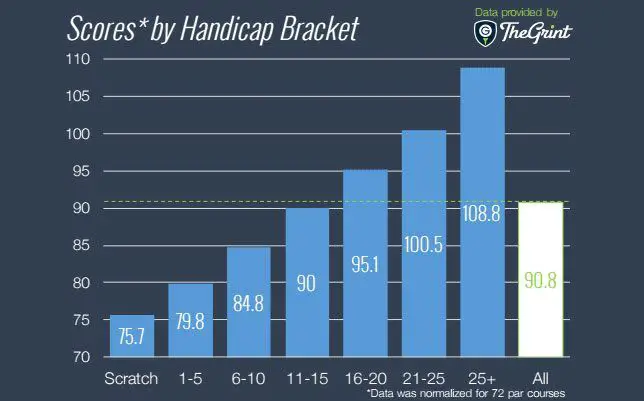How Do Pro Golfers Get Paid

The world of professional golf is not only a captivating display of skill and athleticism but also a realm where fortunes are made. As fans watch in awe of the golfers’ precision shots and clutch putts, a burning question often arises: How do pro golfers actually get paid?
In this comprehensive guide, we will embark on a journey to unravel the intricacies of pro golfers’ earnings. From the mesmerizing world of tournament prize money to lucrative sponsorship deals, appearance fees, and off-course ventures, we will explore the diverse revenue streams that shape the financial landscape of professional golf.
Before we dive into the wealth of information, it’s essential to recognize the prominence and allure of professional golf. With global tours, prestigious major championships, and a devoted fan base, the sport offers a stage for golfers to not only compete but also amass significant wealth.
By delving into the mechanisms behind pro golfers’ earnings, we aim to shed light on the financial factors that drive success in the sport. From the remarkable purses of major tournaments to the coveted sponsorships that adorn golfers’ apparel, we will examine the various sources of income that make professional golf a lucrative pursuit.
So, fasten your seatbelts as we tee off into the fascinating world of pro golfers’ earnings, where skill meets fortune, and the green is the color of both victory and prosperity.

Understanding the Professional Golf Industry
The professional golf industry is a thriving ecosystem that encompasses various tours and tournaments worldwide. To understand how pro golfers get paid, let’s first delve into the structure of the industry and its different levels:
The Global Landscape of Professional Golf Tours
Professional golfers compete on different tours around the world, each with its own level of prominence and financial rewards. The major tours include:
- PGA Tour: The PGA Tour is widely regarded as the most prestigious and lucrative tour for male professional golfers. It hosts a series of events throughout the year, culminating in the FedExCup playoffs.
- European Tour: The European Tour features tournaments primarily held in Europe but also extends its reach to other continents. It offers significant prize money and provides opportunities for international players to showcase their skills.
- LPGA Tour: The LPGA Tour is the premier women’s professional golf tour, attracting top female golfers from around the globe. It offers a platform for talented women golfers to compete and earn substantial rewards.
These tours serve as the primary platforms for pro golfers to showcase their skills, earn prize money, and secure lucrative sponsorship deals.
Exploring Prize Money in Professional Golf
Prize money forms a substantial portion of a professional golfer’s earnings. Let’s take a closer look at how it is distributed and the significant sums involved:
Distribution of Prize Money
In professional golf tournaments, prize money is typically distributed based on the players’ rankings or finishing positions. The higher a golfer’s rank or the better their performance, the more substantial their share of the prize money.
Example: Distribution of Prize Money in a Tournament
| Position | Prize Money Share |
|---|---|
| 1st | $1,500,000 |
| 2nd | $900,000 |
| 3rd | $600,000 |
| 4th | $400,000 |
| 5th | $300,000 |
| … | … |
Majors and Prestigious Events
Major championships and other prestigious events in professional golf offer substantial prize money. These tournaments attract a wide audience and have a rich history, elevating their financial significance. For example:
- The Masters: The Masters Tournament, held annually at Augusta National Golf Club, offers one of the largest purses in professional golf. In recent years, the prize money has exceeded $11 million, with the winner receiving a significant portion of that amount.
- U.S. Open: The U.S. Open is one of the four major championships in golf, and its prize money is also substantial. In 2021, the total purse was over $12 million, with the winner earning a significant share.
The prize money at major championships and prestigious events reflects the magnitude of these tournaments and the high stakes involved.
Sponsorship and Endorsement Deals
Sponsorship and endorsement deals play a crucial role in a professional golfer’s income. Let’s explore how golfers secure these deals and the factors that influence sponsorship opportunities:
Securing Sponsorship Deals
Professional golfers, especially those with a high ranking and public visibility, often attract sponsorship deals from various brands and companies. These deals involve endorsing products, wearing branded apparel, and representing the sponsor’s brand in promotional activities. Here’s a closer look at the process:
- Player Performance and Rankings: A golfer’s performance on the course, including their world ranking and tournament victories, significantly impacts their attractiveness to sponsors. High-ranking players with consistent success often have more sponsorship opportunities.
- Personal Brand and Marketability: A golfer’s personal brand and marketability play a vital role in securing sponsorships. Factors such as charisma, fan following, and media presence can make a player more appealing to sponsors.
- Established Relationships and Networking: Building relationships and networking within the golf industry can open doors to sponsorship opportunities. Agents, managers, and industry connections often play a key role in connecting golfers with potential sponsors.
- Alignment with Sponsor’s Values and Target Market: Sponsors seek athletes who align with their brand values and target market. Golfers who resonate with a sponsor’s target audience or embody their brand image are more likely to secure endorsement deals.
Examples of Golfers with Lucrative Sponsorship Deals
Numerous professional golfers have secured highly lucrative sponsorship deals, contributing significantly to their overall income. For example:
- Tiger Woods: Regarded as one of the greatest golfers of all time, Woods has had long-standing endorsement deals with companies like Nike, Rolex, and Bridgestone, earning him substantial income alongside tournament winnings.
- Rory McIlroy: As a young and accomplished golfer, McIlroy has secured sponsorship deals with brands like Nike, TaylorMade, and Omega. These endorsements provide him with significant financial support in addition to his prize money earnings.
Sponsorship and endorsement deals not only contribute to a golfer’s income but also help elevate their public profile and expand their brand beyond the golf course.
Appearance Fees and Exhibitions
In addition to prize money and sponsorships, professional golfers may earn income through appearance fees and participation in exhibitions. Let’s explore these avenues further:
Appearance Fees
Golfers who have achieved a high level of success and popularity may receive appearance fees to participate in tournaments or events. These fees serve as compensation for their presence and contribute to their overall income. Appearance fees can vary depending on the golfer’s stature, tournament significance, and the event’s budget.
Corporate Events and Exhibitions
Professional golfers may also participate in corporate events, charity outings, or special exhibitions that offer financial compensation. These events often feature pro-am tournaments, where amateurs play alongside professionals, creating unique experiences for participants and generating revenue for the golfers involved.
Golfers who engage in corporate events and exhibitions can earn appearance fees or performance-based compensation, further diversifying their income streams.
Performance Bonuses and Incentives
In addition to their base earnings from prize money, golfers may have performance bonuses and incentives built into their contracts. Let’s explore these additional sources of income:
Achieving Milestones and Performance-based Bonuses
Golfers who reach specific milestones or achieve exceptional results may trigger performance-based bonuses. These bonuses can be tied to factors such as winning multiple tournaments in a season, attaining a certain world ranking, or capturing major championships.
Example: Performance-based Bonuses
- Winning multiple tournaments in a season: Golfers may receive a significant bonus for achieving a predetermined number of victories in a calendar year. For example, a golfer may receive a substantial bonus for winning three or more tournaments in a season.
- Major championship victories: Winning a major championship, such as The Masters or the U.S. Open, can lead to substantial performance bonuses from sponsors, adding to a golfer’s overall income.
These performance-based bonuses provide an extra incentive for golfers to strive for excellence and achieve remarkable milestones.
Product Endorsements and Licensing
Professional golfers often lend their names and images to endorse golf-related products and services. Let’s delve deeper into product endorsements and licensing agreements:
Golf Equipment and Apparel Endorsements
Golfers are often approached by equipment manufacturers and apparel brands to endorse their products. These endorsements typically involve using the brand’s golf clubs, balls, or wearing their apparel during tournaments and promotional events. Here’s how golf equipment and apparel endorsements work:
- Club and Ball Endorsements: Golfers may sign endorsement deals with manufacturers like Titleist, Callaway, or TaylorMade to exclusively use their clubs and balls. These partnerships often include financial compensation along with access to the latest equipment and custom fittings.
- Apparel Endorsements: Golfers may also secure apparel endorsement deals with brands like Nike, Adidas, or Under Armour. These partnerships involve wearing the brand’s clothing and accessories on the course and during media appearances.
Golf Course Design and Brand Licensing
Some professional golfers expand their brand beyond their playing career by venturing into golf course design. Successful golfers with a keen eye for course layout and architecture may collaborate with developers to design and brand golf courses under their name. This can be a lucrative endeavor and create a lasting legacy within the golf industry.
Example: Golfer-turned-Designer
- Jack Nicklaus: Nicklaus, one of the most accomplished golfers in history, has built a successful career as a golf course designer. His company, Nicklaus Design, has created numerous renowned golf courses worldwide, generating substantial income through design fees and brand licensing.
By lending their expertise to product endorsements, licensing agreements, and golf course design, professional golfers can generate significant income beyond their tournament earnings.
Off-Course Ventures and Business Ventures
Professional golfers often pursue off-course ventures and business opportunities that contribute to their overall income. Let’s explore some of the entrepreneurial endeavors golfers engage in:
Golf Academies and Instruction
Golfers with a passion for teaching and a desire to share their knowledge may establish their own golf academies or offer personalized instruction. These academies and lessons can generate income through coaching fees, clinics, and golf school programs.
Business Investments and Endorsements
Successful professional golfers may choose to invest in various business ventures, ranging from real estate to technology startups. These investments can provide significant returns and diversify their income streams. Additionally, golfers may endorse other non-golf-related products and services, such as luxury brands or financial institutions, to expand their financial portfolio.
Example: Phil Mickelson’s Coffee Business
- Phil Mickelson, a renowned golfer, is also the co-owner of a coffee company called “Coffee For Wellness.” This venture allows Mickelson to explore his passion for coffee while diversifying his income beyond the golf course.
By venturing into off-course business opportunities, professional golfers can create additional revenue streams and establish a solid financial foundation for their future.
Financial Support from Professional Associations
Professional golf associations provide financial support and benefits to their members to ensure their well-being and continued participation in the sport. Let’s explore the assistance provided:
Player Assistance Programs
Professional golf associations, such as the PGA Tour, offer player assistance programs to support golfers during challenging times. These programs may provide financial aid, medical coverage, and resources for career transitions.
Retirement Plans and Pension Schemes
Professional golf associations often offer retirement plans and pension schemes to ensure players have financial security beyond their playing careers. These plans may include contributions from the players themselves and the associations, providing a safety net for their future.
Health Insurance Coverage
Professional golfers may receive health insurance coverage through their associations, ensuring access to medical services and coverage for injuries or health-related expenses.
The support and benefits provided by professional golf associations contribute to the overall financial well-being of golfers throughout their careers and beyond, providing them with essential financial stability.
Considerations for Taxes, Agents, and Expenses
While professional golfers enjoy substantial earnings, it’s important to consider various financial aspects and responsibilities. Let’s explore key considerations for taxes, agents, and expenses:
Tax Implications
Professional golfers often compete in tournaments across different countries, each with its own tax regulations. Managing taxes can be complex, requiring careful planning and compliance. Golfers may seek the guidance of tax professionals to navigate international tax obligations and optimize their financial situation.
Agents and Management
Many professional golfers work with agents or management teams who handle contract negotiations, sponsorship deals, and financial matters. Agents play a vital role in securing favorable contracts, maximizing earnings, and providing guidance on financial decisions.
Expenses and Cost Management
While professional golfers can earn significant income, they also face various expenses, including travel costs, accommodation, coaching fees, and equipment expenses. Managing these expenses effectively is essential for maintaining financial stability and optimizing earnings. Golfers often work closely with financial advisors to ensure responsible spending and investment strategies.
It’s important for professional golfers to have a clear understanding of their financial responsibilities and seek professional advice to manage their finances efficiently.
Conclusion
Professional golfers earn income through various channels, including prize money, sponsorship deals, appearance fees, and off-course ventures. Prize money from tournaments forms a substantial part of their earnings, with major championships offering significant financial rewards. Sponsorship and endorsement deals provide additional income and opportunities for exposure.
Golfers may earn appearance fees for participating in tournaments and exhibitions, while performance bonuses and incentives reward exceptional achievements. Product endorsements, licensing agreements, and off-course ventures diversify their income streams. Professional associations offer financial support and benefits, ensuring the well-being of golfers throughout their careers.
While professional golf can be financially rewarding, golfers must consider factors such as taxes, agent fees, and expenses to effectively manage their finances. By understanding these aspects and making informed financial decisions, pro golfers can build a solid foundation for their financial future.
In the dynamic and competitive world of professional golf, a combination of talent, hard work, and strategic financial management contributes to the financial success of pro golfers.




